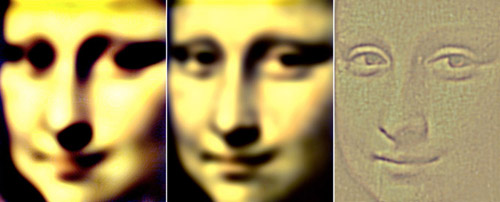You may find it surprising that I was in a sorority in college. I was not only a member of this sorority, but I was very involved, having held three VP positions, a pledge mom one semester, and chapter president for two consecutive semesters. I can go on and on about my sorority days, but I’ll save that for another day.
One of the many things that the general public knows about the greek system is that when a member stars pledging, he/she is given a nickname. This nickname may be based on the pledge’s personality, looks, hobbies…almost anything!
My nickname was Mona Lisa. I will not divulge the exact meaning behind this name on the world wide web, but if you really want to know, ask and I’ll tell you. 😉
Although I have studied art history extensively and is an avid art lover, I have never really liked da Vinci’s masterpiece. When I visited the Louvre in Paris, I found the painting underwhelming and could not understand why it was so popular. However, after gaining this new nickname, I naturally became more interested in the lady with the mysterious smile.
I knew that art historians and critics have varying, sometimes outrageous theories on the portrait and its model but the one thing that everyone seemed to focus on was her smile. Why is the Mona Lisa‘s smile so intriguing?
And today, I discovered that there may be a scientific explanation: because da Vinci painted her in colors that play tricks on the eye.
Margaret S. Livingstone is a professor of neurobiology at Harvard who studies how cells in the visual system process information: form, color, depth, and movement. She explains that the Mona Lisa‘s smile is almost entirely in low spatial frequencies, and so is best seen by your peripheral vision.

The three images above show the Mona Lisa‘s face filtered to show selectively lowest (left) low (middle) and high (right) spatial frequencies.
So what does this mean? When you look at the Mona Lisa‘s eyes or the background, you will associate the painting with a smile like the left or middle panels and think she is smiling. However, if you look directly at her smile, you will see the smile depicted in the right panel, where her smile has vanished.
In other words, she always seems to be smiling but doesn’t when you look directly at her. All due to an optical illusion.
How awesome is that?!?
Via Collision Detection.






 I like books, gadgets, spicy food, and art. I dislike shopping, hot weather, and the laws of entropy. Although I am a self-proclaimed computer nerd, I still have a love for handbags and makeup... and I am always teetering on high heels. To learn more about me, visit the
I like books, gadgets, spicy food, and art. I dislike shopping, hot weather, and the laws of entropy. Although I am a self-proclaimed computer nerd, I still have a love for handbags and makeup... and I am always teetering on high heels. To learn more about me, visit the 


I’ve never followed a blog before, but yours is different and lovely so I’ve been visiting.
That’s a new and very interesting perspective for the Mona Lisa’s smile. Thanks for sharing that tidbit!